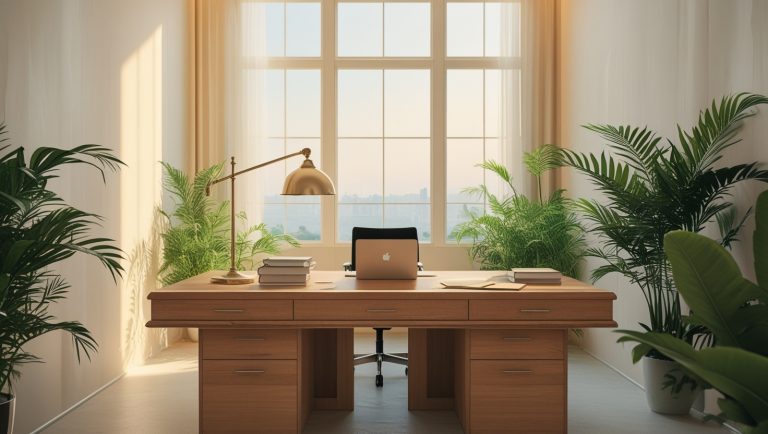How to Improve Water Pressure in a House Homeowner’s Guide
Water is one of the most essential resources in any home, and its flow affects daily comfort and functionality. From taking showers to washing dishes, filling bathtubs, watering gardens, and running appliances, good water pressure makes all the difference. Low water pressure, on the other hand, can be frustrating and inefficient. A weak shower or a washing machine that takes forever to fill can quickly turn routine tasks into time-consuming chores.
Understanding water pressure and learning how to manage it is not just about comfort but also about efficiency, safety, and the long-term health of your plumbing system. In this guide, we’ll explore what water pressure is, why it matters, common causes of low water pressure, and step-by-step methods to improve it. We’ll also examine scientific explanations, historical developments in plumbing, cultural perspectives, and practical homeowner strategies.
By the end, you’ll have a clear, actionable framework for diagnosing and fixing water pressure issues at home.
What is Water Pressure?
The Science Behind Water Pressure
Water pressure refers to the force that pushes water through pipes and into fixtures. It is typically measured in pounds per square inch (PSI). In most households, ideal water pressure falls between 40–60 PSI, with 50 PSI considered comfortable for everyday use.
Too low, and you’ll struggle with weak showers and slow faucets. Too high, and you risk damaging pipes, appliances, and fixtures.
How Pressure is Controlled
Water pressure in a home is influenced by several factors:
- The municipal supply and water main pressure
- Elevation of your home compared to the water source
- Condition of pipes and plumbing layout
- Internal regulators and valves
This makes diagnosing low pressure a multi-step process rather than a single fix.
Historical Background: Plumbing and Pressure
Historically, water pressure was largely dependent on gravity. Ancient civilizations like the Romans used aqueducts and elevated cisterns to deliver water, relying on natural flow. In the 19th century, as urban areas grew, pressurized water systems with pumps and cast-iron pipes revolutionized plumbing.
Today, advanced pumping stations, pressure regulators, and water towers ensure consistent supply in most developed areas. However, individual household factors can still disrupt the ideal balance.
Common Causes of Low Water Pressure
Municipal Supply Issues
Sometimes the issue is not inside your home. Cities often reduce pressure temporarily for maintenance or emergencies.
Clogged Pipes
Mineral buildup, rust, or sediment inside pipes restrict water flow over time. Older homes with galvanized pipes are particularly prone to this.
Partially Closed Valves
A main shutoff valve or pressure regulator that is not fully open will limit water pressure.
Leaks in the System
Even small leaks reduce overall pressure. This is often accompanied by higher water bills.
Failing Pressure Regulator
If your home has a pressure regulator that has worn out, it may reduce water pressure below recommended levels.
Elevation Differences
If your house sits on higher ground compared to the supply source, gravity may naturally reduce pressure.
How to Diagnose Low Water Pressure
Before fixing, you need to understand where the problem originates.
Step 1: Test Multiple Fixtures
If low pressure is only in one faucet or shower, the issue is likely local (a clogged aerator or fixture). If it affects the whole house, it is a systemic issue.
Step 2: Measure PSI
You can buy a water pressure gauge and attach it to an outdoor spigot.
- Below 40 PSI = low
- 40–60 PSI = normal
- Above 80 PSI = too high, can damage plumbing
Step 3: Check Valves
Locate your home’s main water shutoff valve and ensure it is fully open.
Step 4: Inspect for Leaks
Look for damp spots, dripping pipes, or unexpectedly high bills.
Step 5: Contact Neighbors
If neighbors also report low pressure, the issue likely lies with the municipal supply.
Ways to Improve Water Pressure in a House
Clean or Replace Fixtures
Aerators and showerheads can get clogged with mineral deposits. Cleaning or replacing them can instantly improve local pressure.
Check and Adjust the Pressure Regulator
Most homes have a pressure regulator near the main water line. Adjusting or replacing it can restore proper flow.
If Water Pressure < 40 PSI:
Adjust regulator screw clockwise to increase
Else If Water Pressure > 60 PSI:
Adjust counterclockwise to decrease
Else:
Leave regulator as is
Fix Leaks
Repairing leaks restores pressure while also saving water and reducing utility bills.
Upgrade Old Pipes
Homes with galvanized or corroded pipes often suffer from chronic low pressure. Replacing them with copper or PEX piping can solve the issue long-term.
Install a Booster Pump
If municipal pressure is consistently low, a booster pump can increase pressure for the entire house.
Add a Water Storage Tank
In areas with intermittent supply, tanks paired with pumps can stabilize pressure and ensure consistent flow.
Comparison Table: Common Causes and Solutions
| Cause | Symptom | Solution |
|---|---|---|
| Clogged aerators | Weak flow at single faucet | Clean or replace aerator |
| Municipal supply issue | Whole neighborhood affected | Contact utility provider |
| Partially closed valve | House-wide low pressure | Fully open valve |
| Pipe corrosion | Gradual pressure decline | Replace old piping |
| Faulty regulator | Whole-house pressure drop | Adjust or replace regulator |
| Elevation problem | House uphill from supply | Install booster pump |
Balancing Water Pressure: Too Low vs Too High
While most focus on low water pressure, excessively high pressure is also a risk. High pressure strains pipes, shortens appliance lifespan, and can cause leaks.
Imagine a pie chart:
- 20% of homes suffer from low pressure
- 65% have normal pressure
- 15% have dangerously high pressure
This shows that both extremes matter. Installing and maintaining a pressure regulator keeps systems within the safe zone.
The Role of Water Conservation
Improving pressure should not mean wasting water. For example, fixing leaks increases pressure while also reducing waste. High-efficiency fixtures can maintain strong flow while using less water. The U.S. Environmental Protection Agency notes that households can save up to 10% on water bills by fixing leaks alone.
DIY vs Professional Solutions
| Task | DIY Possible? | Professional Recommended? |
|---|---|---|
| Cleaning aerators | ✅ | ❌ |
| Checking valves | ✅ | ❌ |
| Measuring PSI | ✅ | ❌ |
| Adjusting regulator | ⚠️ Basic adjustments only | ✅ For replacement |
| Replacing pipes | ❌ | ✅ Always |
| Installing booster pump | ❌ | ✅ Always |
Case Study: A Family Home Upgrade
In 2021, a family in Chicago experienced poor water pressure throughout their home. After inspection, they discovered corroded galvanized pipes installed in the 1950s. By upgrading to PEX piping and adding a booster pump, their water pressure rose from 30 PSI to a steady 55 PSI. The investment not only improved comfort but also increased property value.
Helpful Resources
- U.S. Environmental Protection Agency: Water Efficiency
- International Association of Plumbing and Mechanical Officials
- American Water Works Association
For step-by-step demonstrations, see this [YouTube guide](INSERT LINK).
For practical plumbing fixes, see this [YouTube tutorial](INSERT LINK).
For expert explanations of regulators and booster pumps, see this [YouTube video](INSERT LINK).
Conclusion
Water pressure plays a vital role in household comfort and efficiency. Low pressure can make daily tasks frustrating, while excessive pressure can damage plumbing systems. The key to improvement lies in proper diagnosis and targeted solutions.
Simple steps such as cleaning fixtures, checking valves, and fixing leaks may solve many issues. For more complex problems like old piping, faulty regulators, or municipal supply challenges, professional intervention is necessary. Tools like booster pumps and storage tanks offer advanced solutions where basic fixes fall short.
Looking forward, as homes become smarter, future systems may automatically balance water pressure, detect leaks, and optimize usage to conserve resources. Until then, proactive maintenance and awareness remain the best tools homeowners have to ensure steady, reliable water pressure.







